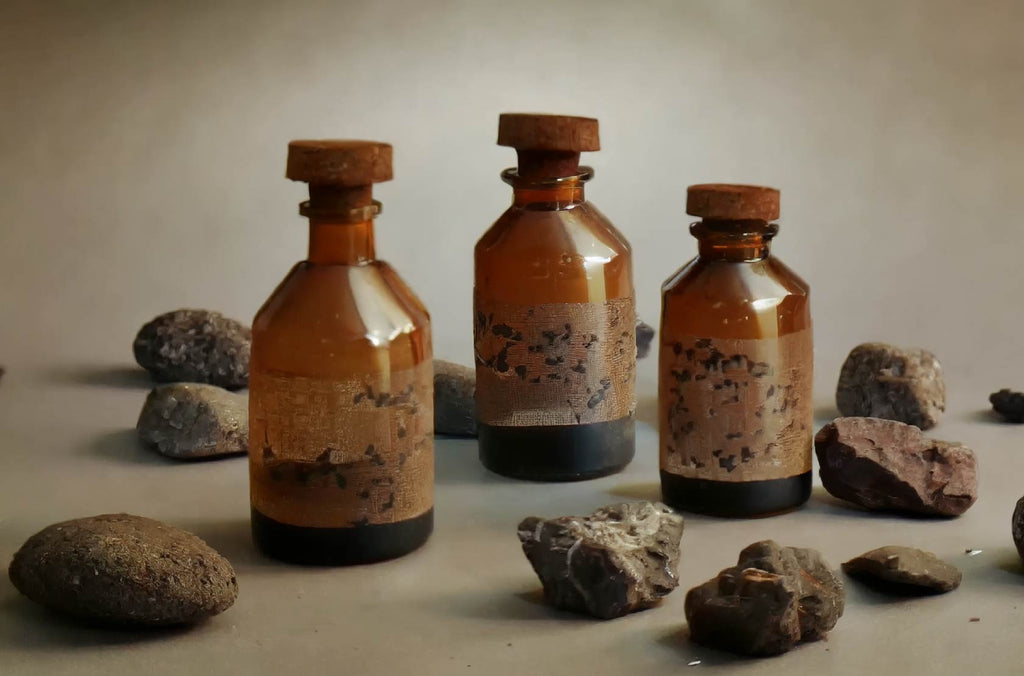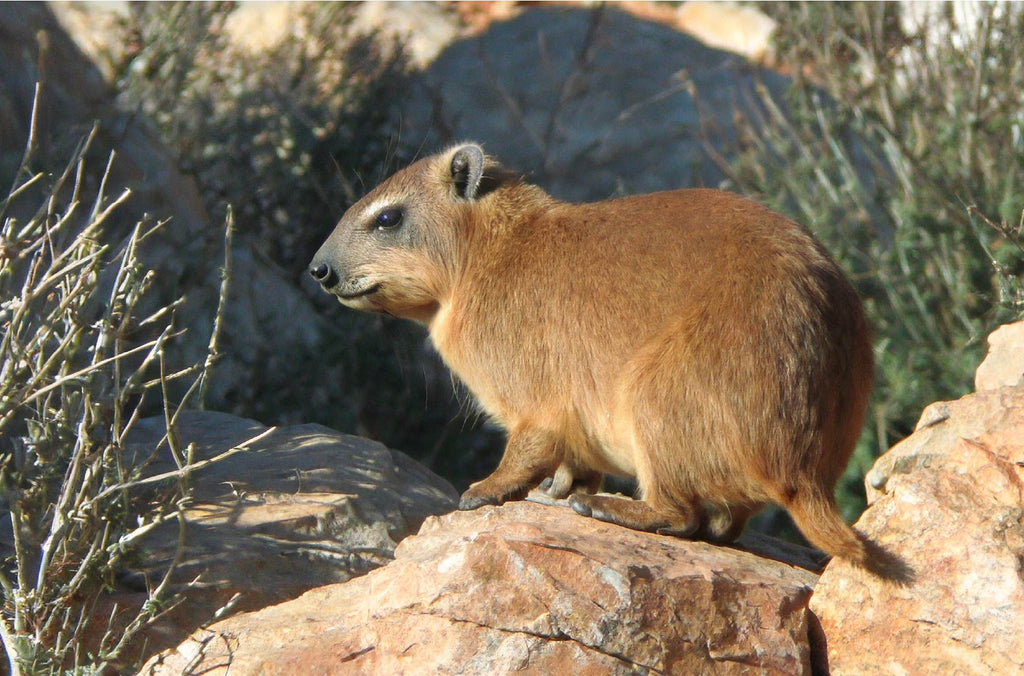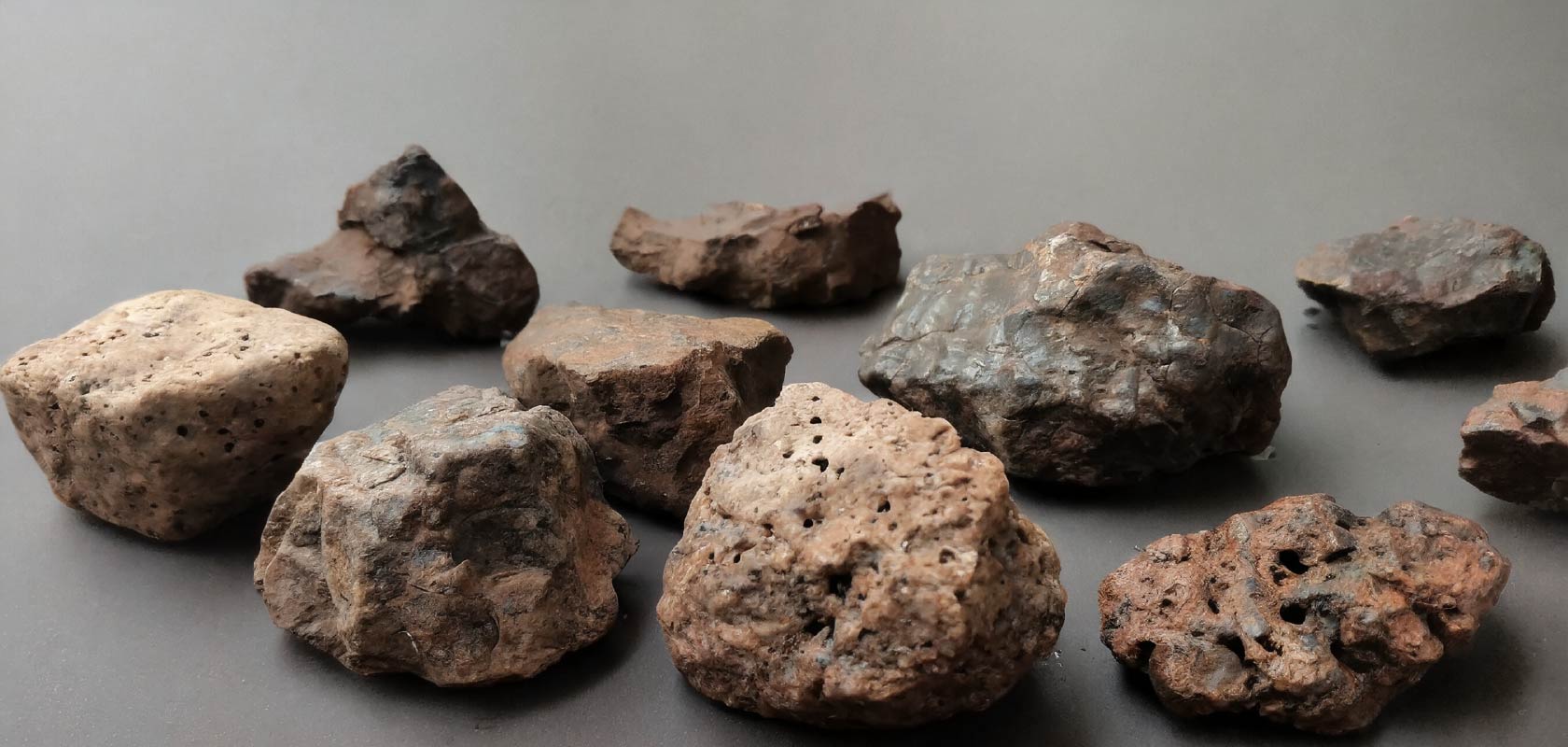The Enigmatic Essence from Ancient Caves
Hyraceum, often referred to as “Africa Stone,” is a unique and fascinating material derived from the excrement of the Rock Hyrax (Procavia capensis), a desert-dwelling rodent-like creature. This substance undergoes a remarkable transformation process, resulting in a rock-like material with a distinctive scent that combines elements of musk, castoreum, civet, tobacco, and agarwood. Harvested without harming the animals, Africa stone serves as an ethical alternative to ingredients like deer musk and civet, which involve the killing or infliction of pain on the source animals.

The Slow Accumulation: Balancing Aromatic Excellence with Sustainability
The material hardens and ages over time until it becomes a fairly sterile, blackish-brown stone known as “Africa Stone.” Despite its appeal in the world of perfumery, hyraceum’s slow accumulation process makes it essentially a non-renewable resource. This has led to ethical concerns, particularly from scientific circles, as hyraceum, accumulating in the form of rock hyrax middens, is a crucial source of information regarding climate and environmental change in arid regions of Africa and Arabia.
Africa stone is harvested through a process that involves climbing into caves, breaking stones, and collecting the fossilized waste. This arduous task, carried out in rudimentary conditions, has ancient roots in East Africa and is reminiscent of practices mentioned in historical texts, where hyraceum was used in mummification techniques by the Egyptians, earning it the alternate names of the Stone of God or the Stone of Africa.
Deer Musk-Like Animalic Intricacy:
At the core of africa stone’s olfactory profile lies an unmistakable animalic quality. This facet, reminiscent of musk, casts a velvety and intimate aura, invoking sensations of warmth and sensuality. The animalic notes in africa stone are not singular but rather intricate, intertwining with other elements to create a multi-layered and evolving fragrance.
Fermented Complexity:
Africa stone’s scent carries a deeply complex fermented character. This complexity arises from the intricate chemical transformations occurring within the material over time. The fermentation process adds layers of richness to the fragrance, elevating it beyond the simplicity of a single-note scent. Each inhalation becomes a journey through the nuances of fermentation, unveiling a tapestry of olfactory experiences.
Castoreum-Like Tobacco Nuances:
A notable element within africa stone’s aromatic tapestry is the presence of tobacco notes much like castoreum. These notes add a hint of smokiness and earthiness, contributing to the overall warmth and depth of the fragrance. The interplay between the animalic and tobacco elements creates a harmonious balance, offering a scent that is simultaneously rugged and refined.
Civet-Like Sensuality:
Civet, a traditional animalic note in perfumery, finds its echo in hyraceum’s olfactory profile. The civet-like sensuality emanating from africa stone adds a touch of wild allure, a primal quality that captivates and intrigues. This sensuality, interwoven with other elements, contributes to the complexity and depth that defines hyraceum’s fragrance.
Woody Resonance of Agarwood:
The presence of agarwood notes in africa stone adds a woody resonance to the overall composition. Agarwood, known for its luxurious and deep woody scent, enhances the sophistication of hyraceum, creating a fragrance that is both grounded and ethereal. This woodiness provides a sturdy foundation for the more volatile and intricate elements, ensuring a well-balanced aromatic experience.

The Transformation Process
The transformation process of hyraceum involves crushing the harvested stones, treating the dark oil with hexane, and filtering it. This process results in a resinoid absolute, a concentrated extract used in perfumery. You could also easily tincture Africa stone in alcohol. Crush the africa stone into smaller pieces. The smaller the pieces, the more efficient the extraction. Determine the ratio of hyraceum to alcohol. A common starting point is using approximately 1 part africa stone to 3 parts alcohol by weight or volume, but this can be adjusted based on personal preference and the potency of the hyraceum.
Hyraceum – a cruelty free alternative
Africa stone emerges as a cruelty-free option for perfumers, offering an ethical alternative to traditional animal-derived scents such as civet, castoreum or deer musk. Harvested without harm to the Rock Hyrax, it stands as a testament to sustainable practices. Beyond its ethical advantages, africa stone is cost-effective for perfumers due to its potent nature—a small amount yields a profound olfactory impact. This efficiency not only aligns with cruelty-free principles but also provides a practical and economical choice, allowing perfumers to achieve the desired aromatic complexity without compromising on ethics or budget constraints. In the world of perfumery, hyraceum proves that conscientious choices need not come at a premium.
Vegan alternatives
However, given the concerns about the slow accumulation and non-renewable nature of africa stone, perfumers have explored alternative options. Synthetic notes, such as indole found in jasmine or compounds like paracresol, civetone, or scatol, can be used to recreate the animalic notes present in africa stone. Natural alternatives include vegetable musks like ambrette or notes with slightly “dirty” nuances, such as cumin, costus, cistus labdanum, sage, atlas cedar, hyssop, osmanthus, and leather notes.
From Ancient Practices to Modern Medicine: Hyraceum in South African Healing Traditions
Beyond its role in perfumery, Africa stone has been used in traditional South African medicine for treating epilepsy. A clinical study testing africa stone samples for their affinity for the GABA-benzodiazepine receptor revealed positive results in some cases, showcasing its potential in neurological applications. However, the slow accumulation of africa stone raises concerns about the impact of its commercial collection on the availability of critical information related to climate change in sensitive regions.
The healing virtues of hyraceum extend beyond traditional medicine. Some African communities use it to stop bleeding, disinfect wounds, relieve migraines, anxiety, and treat certain skin problems. Additionally, it has been associated with addressing convulsions related to epilepsy, showcasing the multifaceted utility of this ancient substance.

Final thoughts on Hyraceum
In conclusion, africa stone stands as a testament to the intricate relationship between nature, traditional practices, and modern industries. Its rich history, both in perfumery and traditional medicine, is intertwined with ethical considerations and challenges related to sustainability. As the fragrance industry continues to evolve, the exploration of alternatives and the development of sustainable practices become crucial in preserving the allure of hyraceum without compromising the delicate balance of ecosystems and ancient traditions.


